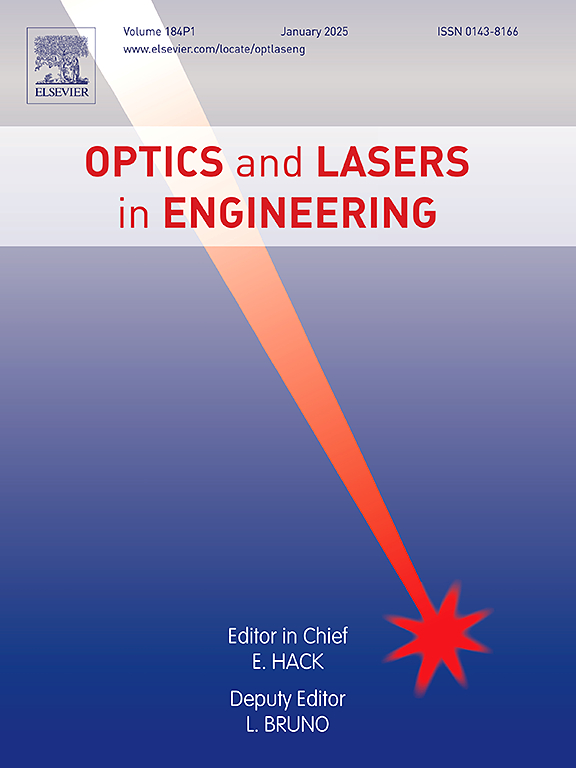Automated unstable resonator alignment via real-time global-local evaluation of near-field interference
IF 3.7
2区 工程技术
Q2 OPTICS
引用次数: 0
Abstract
For lasers based on unstable resonator structures, misalignment of resonator mirrors significantly impacts the output beam performance. To address the mirror misalignment issue in unstable resonators, this study innovatively achieves real-time collaborative identification of primary and secondary mirror misalignments by establishing a dual “global-local” evaluation function system based on near-field interference fringe images. Experimental results demonstrate that the alignment accuracy of the proposed automated resonator alignment method reaches within 3.4 μrad, significantly higher than that of manual alignment. Featuring advantages such as eliminating complex image recognition algorithms, simple hardware configuration, and high alignment efficiency, this method demonstrates substantial application potential in laser devices employing unstable resonator structures.
通过实时全局-局部评估近场干扰的自动不稳定谐振器对准
对于基于不稳定谐振腔结构的激光器,谐振腔镜的不对准严重影响了输出光束的性能。为解决不稳定谐振腔中反射镜不对准问题,本研究创新性地建立了基于近场干涉条纹图像的双“全局-局部”评价函数体系,实现了主副反射镜不对准的实时协同识别。实验结果表明,该方法的对准精度在3.4 μrad以内,明显高于手动对准。该方法消除了复杂的图像识别算法,硬件配置简单,对准效率高,在采用不稳定谐振腔结构的激光器件中具有很大的应用潜力。
本文章由计算机程序翻译,如有差异,请以英文原文为准。
求助全文
约1分钟内获得全文
求助全文
来源期刊

Optics and Lasers in Engineering
工程技术-光学
CiteScore
8.90
自引率
8.70%
发文量
384
审稿时长
42 days
期刊介绍:
Optics and Lasers in Engineering aims at providing an international forum for the interchange of information on the development of optical techniques and laser technology in engineering. Emphasis is placed on contributions targeted at the practical use of methods and devices, the development and enhancement of solutions and new theoretical concepts for experimental methods.
Optics and Lasers in Engineering reflects the main areas in which optical methods are being used and developed for an engineering environment. Manuscripts should offer clear evidence of novelty and significance. Papers focusing on parameter optimization or computational issues are not suitable. Similarly, papers focussed on an application rather than the optical method fall outside the journal''s scope. The scope of the journal is defined to include the following:
-Optical Metrology-
Optical Methods for 3D visualization and virtual engineering-
Optical Techniques for Microsystems-
Imaging, Microscopy and Adaptive Optics-
Computational Imaging-
Laser methods in manufacturing-
Integrated optical and photonic sensors-
Optics and Photonics in Life Science-
Hyperspectral and spectroscopic methods-
Infrared and Terahertz techniques
 求助内容:
求助内容: 应助结果提醒方式:
应助结果提醒方式:


